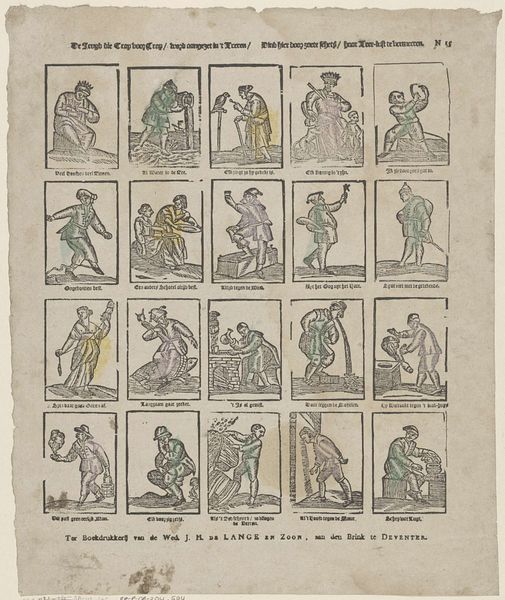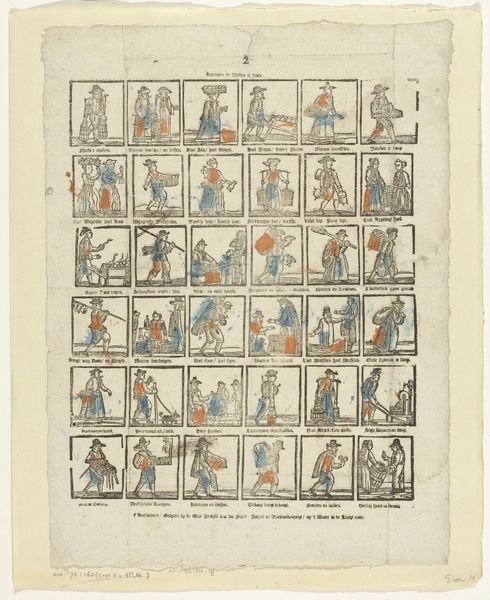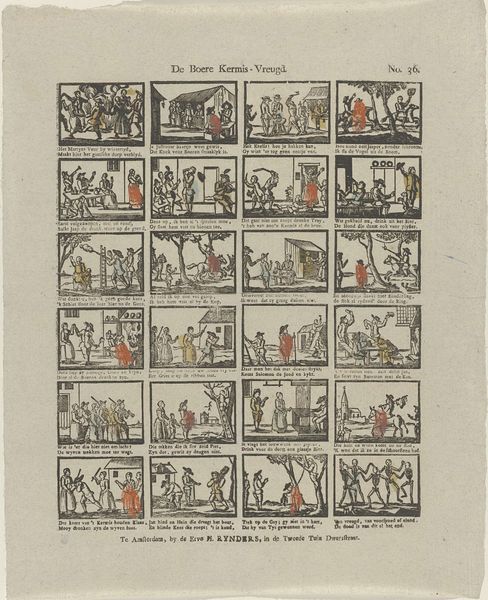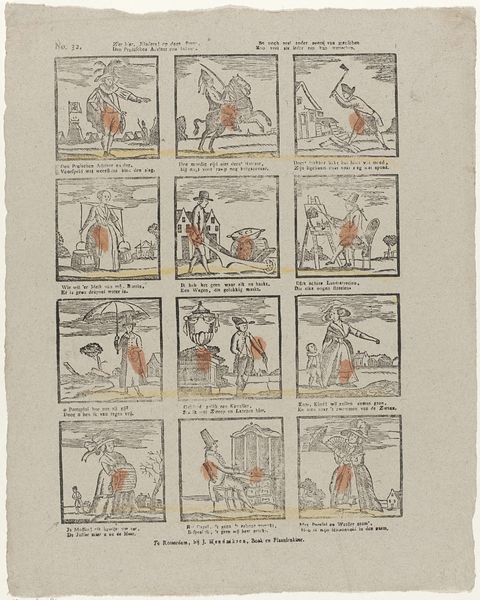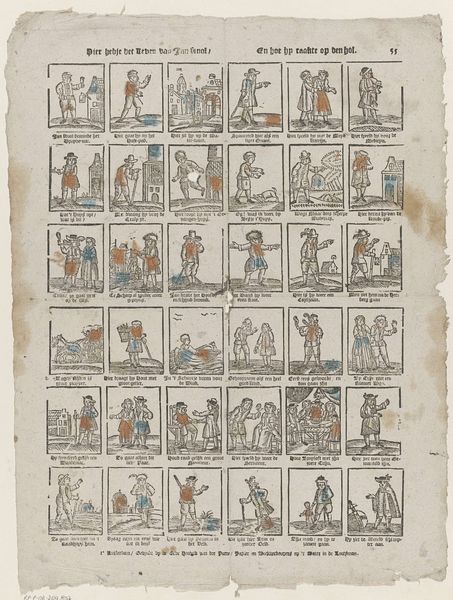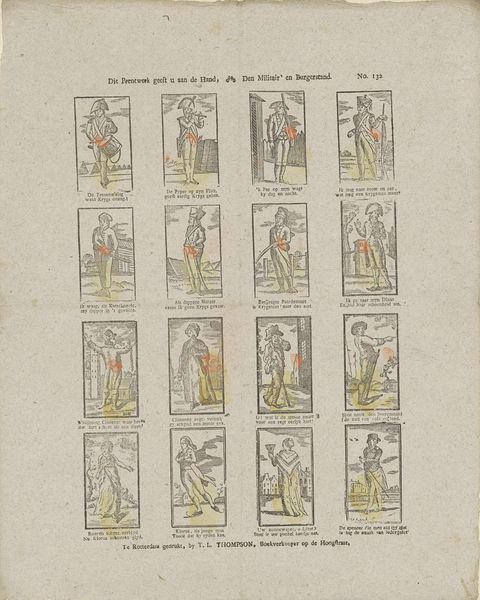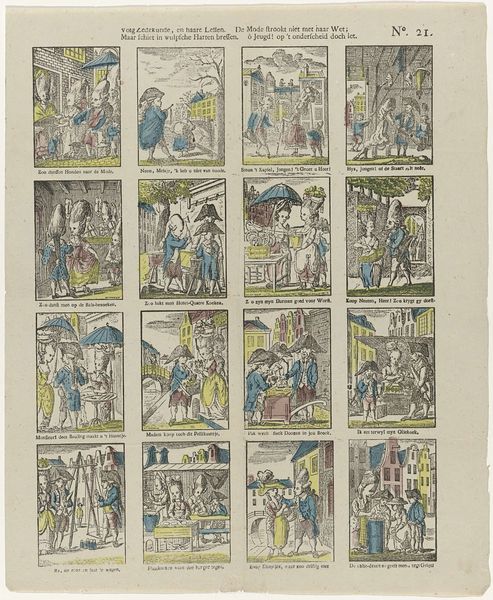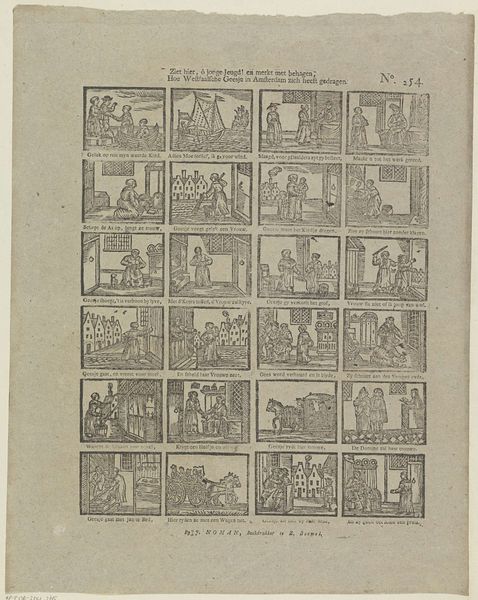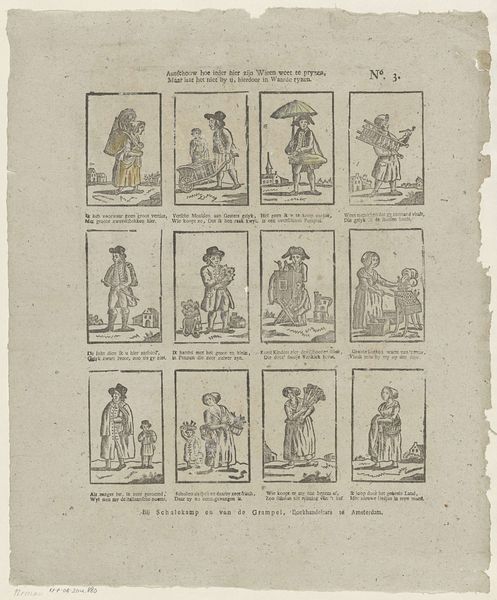
graphic-art, print, engraving
#
portrait
#
graphic-art
# print
#
figuration
#
genre-painting
#
history-painting
#
engraving
Dimensions: height 413 mm, width 336 mm
Copyright: Rijks Museum: Open Domain
Curator: This is “Figuren” by I.I. de Lanier, likely created between 1787 and 1822. It’s a print, an engraving to be exact. What strikes you about it? Editor: Initially, it's the fragmentation. All those individual vignettes—isolated figures in their own little boxes. There's a sense of distance. It reminds me of a kind of early sociological catalog. Curator: That fragmentation is interesting. The composition, a grid of rectangles, isolates each figure. But notice how the lines, despite being quite simple, create distinct forms and narratives within each frame. There's a real precision of technique at work here, maximizing effect with minimal means. Editor: And the figures themselves seem to embody different virtues, professions, or follies. Look, there's one clearly labelled 'De Zot' or 'The Fool,' and another with a shepherd. The sheep symbolises innocence or a pastoral ideal? Curator: Absolutely. The semiotic weight here is significant. Lanier utilizes widely recognizable visual tropes. Consider the figure with the ladder; a symbol of social climbing? Or, the individual with the sheep signifies not only innocence but also potentially, religious associations and sacrifice. Editor: Do you think that there is social commentary at work, even satire, in the selection of subjects? Curator: Perhaps, in the way that archetypes are chosen and presented. There is both an acknowledgement of an existing system of virtues and vices, but also an element of the ridiculous. Editor: And that interplay contributes to its timelessness; you see these types echoed across centuries of art and literature. There’s comfort, if also a slight critique, in that familiar vocabulary of symbols. Curator: Agreed. The power lies not just in the individual scenes but the relational reading we are asked to make as viewers. These distinct semiotic clusters build the whole. Editor: It creates a conversation among images, centuries later, and across different media, which says so much for the human condition. Curator: It really highlights that effective use of form and recognizable themes. Editor: Yes, the echo is very thought provoking!
Comments
No comments
Be the first to comment and join the conversation on the ultimate creative platform.

